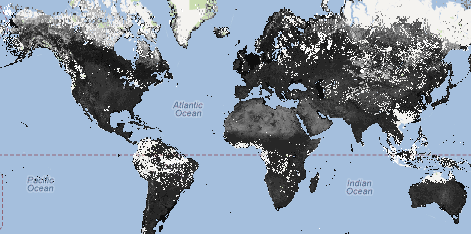Albedo Learning Sequence

Focus:
What is albedo and how is it impacted by environmental variables, such as land cover, seasonality, and snow?
Rationale:
In order to engage students in the science of climate change it is important to make the learning experience authentic and grounded in the students’ experience and environment. The Albedo Learning Sequence begins with an introduction to albedo and how it relates to climate. Once students are familiar with the concept of albedo, they use online tools to explore interactions between albedo and other environmental variables (snow, land cover type, seasonality, etc.) at their location and other locations they find interesting. The Learning Sequence culminates with an inquiry-based project in which students develop their own research questions and hypotheses, and use the tools and knowledge they have acquired to conduct an investigation and analyze their results.
Part 1.
Read a brief introduction to albedo and complete thought
questions.*
Part 2. Use the Carbon Mapper tool to explore albedo, land cover, and seasons.
Part 3. Use
provided data to explore the interactions between albedo, snow
depth, and land cover.*
Part 4. Use available tools to conduct their own investigation to explore interactions between albedo, land cover, and/or seasonality by posing a research question, developing a hypothesis, and analyzing results.
Part 5.
Conduct an advanced exploration of albedo by downloading and
analyzing data available online at a finer spatial and
temporal resolution. This is appropriate for upper-level
students as a capstone or long-term project.
*Can be completed as a homework assignment
Optional:
After student are familiar with the concept of albedo, take
laboratory measurements. See the Albedo Laboratory
Activities page for for more information and links to
activities such as: Wintertime
Albedo Measurements, using infrared laser
thermometers, or the UAF Arctic Climate Modeling Program’s
Albedo Lab.
